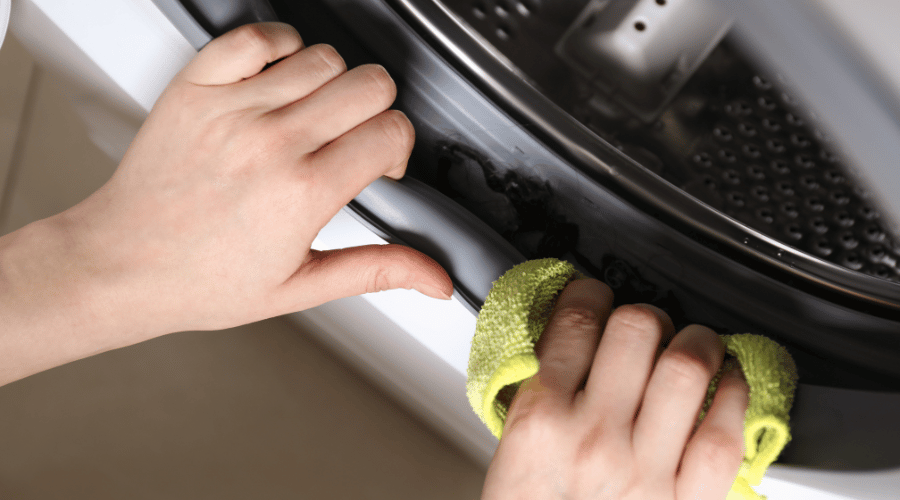Protecting Your Washing Machine from Limescale Buildup: Prevention and Treatment
Limescale buildup can be a common issue in washing machines, causing reduced efficiency, damage to components, and even malfunctions. Understanding how to prevent and treat limescale buildup is essential for maintaining the optimal performance of your washing machine.
In this guide, we will explore effective methods for protecting your washing machine from limescale buildup. Let’s dive in!
limescale and how does it form in washing machines
Limescale is a hard, chalky deposit that forms when calcium and magnesium minerals in the water accumulate over time. When hard water is heated, these minerals precipitate and adhere to surfaces, including the inner components of the washing machine.
Limescale buildup can lead to several problems, including
– Reduced efficiency and longer washing times.
– Blocked pipes and water jets, resulting in poor water flow.
– Damage to heating elements, causing malfunctions.
– Increased energy consumption due to reduced efficiency.
– Dingy and faded laundry due to insufficient detergent action.Limescale buildup is a problem for several reasons:
Reduced Efficiency: Limescale acts as an insulator, reducing the efficiency of heating elements in the washing machine. This means it takes longer for the water to heat up, resulting in longer washing times and increased energy consumption.
Poor Water Flow: Limescale can block pipes, water jets, and other components of the washing machine’s water circulation system. This restricts the flow of water, leading to reduced cleaning power and potentially leaving residue on your laundry.
Damage to Components: Limescale can accumulate on heating elements, valves, and other internal parts of the washing machine. Over time, this buildup can cause damage and malfunctions, resulting in costly repairs or even the need for a replacement.
Increased Maintenance: Limescale buildup requires more frequent cleaning and maintenance to keep the washing machine in optimal condition. Neglecting to address limescale can lead to more severe issues and shorten the lifespan of the machine.
Impact on Laundry: Limescale can interfere with the effectiveness of detergents, making it harder to remove stains and leaving clothes looking dull and faded. It can also contribute to unpleasant odors in the machine and on the washed items.
Prevention tips to protect your washing machine from limescale buildup
Use a water softener: Consider installing a water softener system to reduce the hardness of the water entering your washing machine.
Use a descaler: Add a descaling agent specifically designed for washing machines to the drum during regular wash cycles.
Use the right detergent: Choose a detergent specifically formulated for hard water and limescale prevention.
Use lower temperature settings: Washing clothes at lower temperatures reduces the likelihood of limescale buildup.
Clean the detergent dispenser: Regularly remove and clean the detergent dispenser to prevent limescale accumulation.
Treating limescale buildup in your washing machine
Vinegar descaling: Run an empty cycle with a mixture of equal parts white vinegar and water to dissolve limescale. Wipe down surfaces with vinegar and scrub any stubborn areas with a soft brush.
Citric acid descaling: Dissolve citric acid powder in hot water and run an empty cycle to remove limescale. Wipe down surfaces and rinse thoroughly afterward.
Descaling products: Commercial descaling products are available that effectively remove limescale. Follow the instructions provided by the manufacturer.
Regular maintenance for limescale prevention
Clean the drum and door seal– : Regularly wipe down the drum and door seal to remove any limescale or residue buildup.
Check and clean the filter: Follow the manufacturer’s instructions to locate and clean the filter, removing any debris or limescale.
Regular descaling: Perform descaling treatments every few months or as recommended by the manufacturer to prevent limescale buildup.
Conclusion
Limescale buildup can affect the efficiency and longevity of your washing machine. By following these prevention tips, treating limescale buildup, and incorporating regular maintenance practices, you can protect your washing machine and ensure optimal performance. Remember, a little effort in limescale prevention goes a long way in maintaining the functionality of your washing machine
FAQs
-
What causes limescale buildup in washing machines?
Limescale buildup in washing machines is primarily caused by the presence of hard water. Hard water contains high levels of minerals like calcium and magnesium, which precipitate and form limescale when heated.
-
How can I prevent limescale buildup in my washing machine?
Here are some preventive measures:
– Use a water softener system to reduce the hardness of the water.
– Use a descaling agent specifically designed for washing machines during regular wash cycles.
– Choose a detergent formulated for hard water and limescale prevention.
– Wash clothes at lower temperature settings to reduce the likelihood of limescale buildup.
– Regularly clean the detergent dispenser to prevent limescale accumulation. -
How often should I descale my washing machine?
The frequency of descaling depends on the hardness of the water in your area and the usage of the washing machine. Generally, performing a descaling treatment every few months or as recommended by the manufacturer is advisable.
-
Can I use vinegar to descale my washing machine?
Yes, vinegar is an effective natural descaling agent. You can run an empty cycle with a mixture of equal parts white vinegar and water to dissolve limescale. Remember to wipe down surfaces and rinse thoroughly afterward.
-
Are there commercial descaling products available for washing machines?
Yes, there are descaling products specifically designed for washing machines available in the market. Follow the instructions provided by the manufacturer when using these products.
-
How do I clean the drum and door seal to prevent limescale buildup?
Regularly wipe down the drum and door seal with a damp cloth to remove any limescale or residue buildup. Pay attention to the rubber gasket and clean any crevices or folds where limescale may accumulate.
-
Should I clean the filter in my washing machine?
Yes, it is important to clean the filter regularly. Refer to your washing machine’s manual to locate the filter and follow the manufacturer’s instructions for cleaning. This helps remove any debris or limescale that may clog the filter and affect the machine’s performance.
-
Can limescale damage my washing machine?
Yes, limescale buildup can damage the internal components of the washing machine over time. It can affect the heating elements, valves, and other parts, leading to malfunctions and the need for repairs.
-
Can I use descaling products meant for other appliances in my washing machine?
It is recommended to use descaling products specifically designed for washing machines. These products are formulated to be safe and effective for the machine’s internal components. Using descalers meant for other appliances may not provide optimal results or could potentially damage the washing machine.
-
Is it necessary to descale a new washing machine?
While new washing machines are less likely to have significant limescale buildup, it is still a good practice to perform an initial descaling to remove any residue or impurities that may be present from the manufacturing process. Consult your washing machine’s manual for specific recommendations.

